In Mexico, Monarch butterflies are beginning to arrive this week in their over-wintering sites as people prepare for Day of the Dead celebrations.

Celebrations for Día De Los Muertos, or Day of the Dead, officially start November 1 and end November 2, and is a time of celebration and remembrance of friends and family who have died and embarked on their spiritual journey through the afterlife.
The two-day festival stems from the continuation of ancient Aztec rituals meant to honour those who had died. During the festival, people are encouraged to gather and pray to help those who have departed on their spiritual paths.
During the festival, families and communities gather to hold vigils and parties in honour of those they’ve lost. They decorate altars to commemorate the deceased, often decorating those altars with the deceased’s favourite foods or personal items, with the hopes that spirits will bless the loved ones.

Day of the Dead is not about being scared of the supernatural, but rather about remembering the lives of their loved ones.
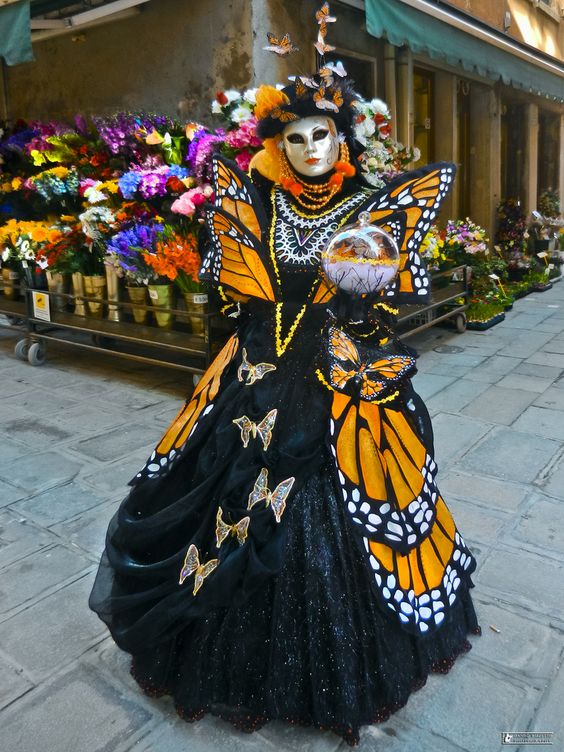
Rather than dressing in all black and mourning the passing of loved ones, Día De Los Muertos becomes a colorful and vibrant national remembrance of the lives of deceased relatives and friends.

While most people who recognize the international holiday decorate their homes and gravesites of their ancestors with altars, relics, candles, foods, and drinks favored by the deceased; many cities will join in on the festivities by hosting parades, community-wide ceremonies, and street parties.

In Michoacán, Mexico, Día de los Muertos, takes on an even more interesting aspect. According to traditional belief among Michoacán’s Mazahuas indigenous community, Monarch butterflies are souls of ancestors who return to Earth for their annual visit.
The video below, “Muerte Es Vida” (Death is Life), follows a family from Michoacán’s Mazahuas indigenous community as they celebrate Day of the Dead. Native peoples explain how the Monarch butterflies always return a few days before the celebrations begin. Children were taught to set out water to welcome the butterflies because they were tired and thirsty from their travels.
Whether you live in Mexico or elsewhere, you can join in the Day of the Dead celebration by sharing these stories with your children and grandchildren and by downloading the Day of the Dead Activity Guide. There are also any children’s books available that also teach about Dia de Los Muertos.

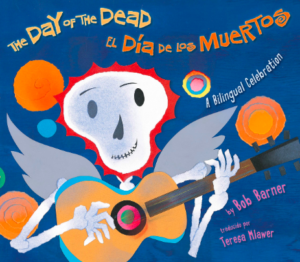
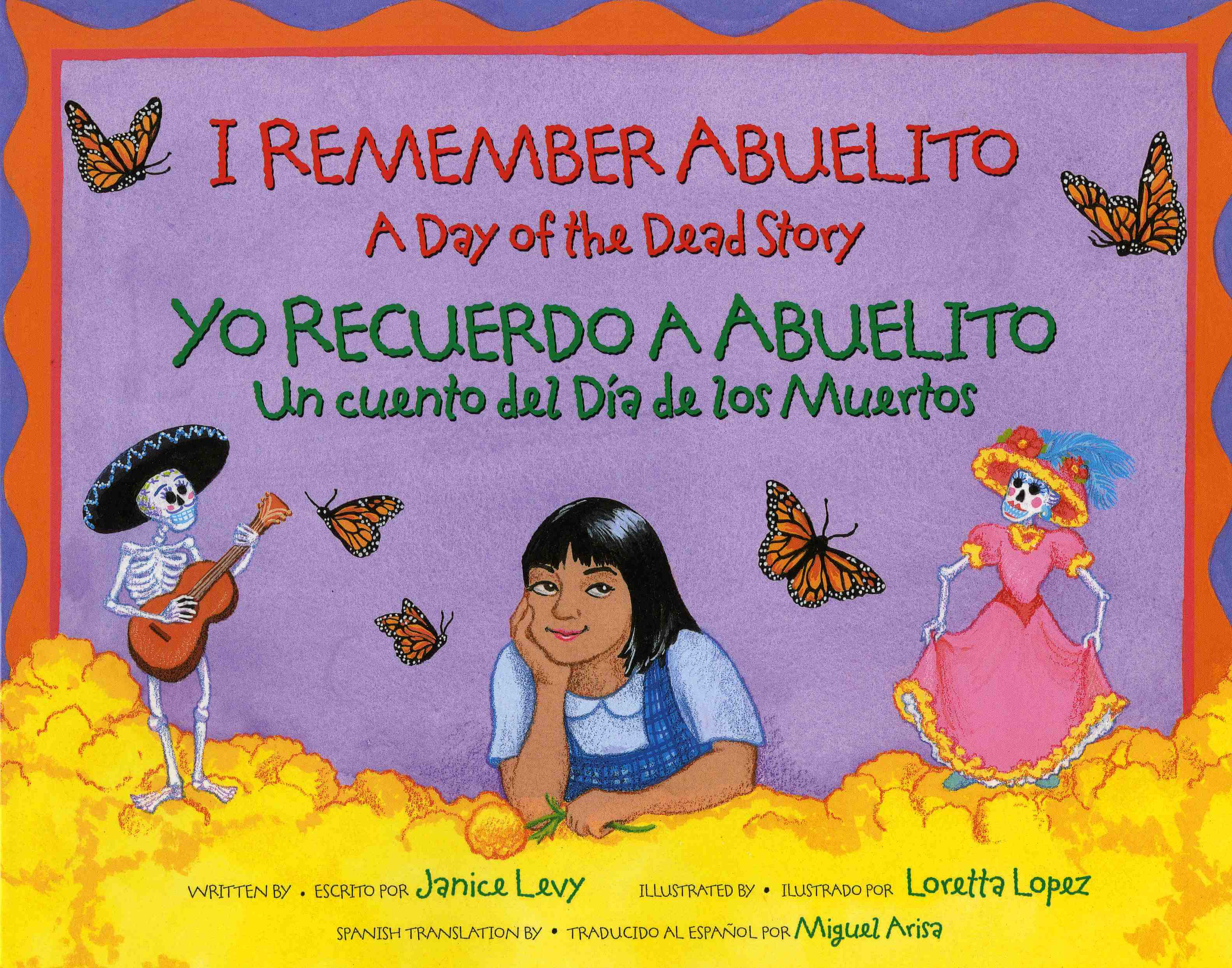
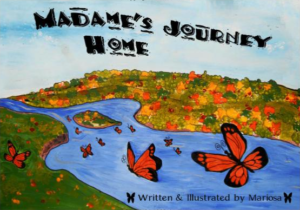

Celebrate Day of the Dead with this colorful t-shirt.
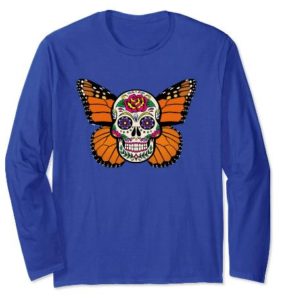


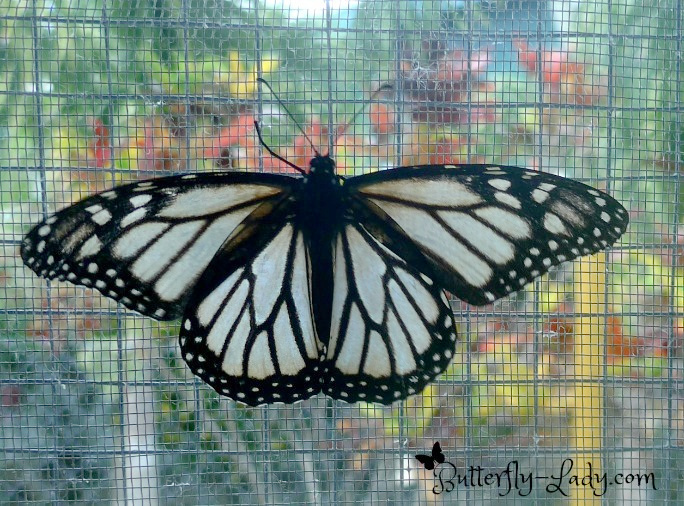 According to
According to  Monarchs are preyed upon by birds called Red-Vented Bulbuls (Pycnonotus cafer), which are quite abundant here on our island, as well as in Hawai‘i. Red-vented Bulbuls come from Southeast Asia and are relative newcomers to the islands of Polynesia.
Monarchs are preyed upon by birds called Red-Vented Bulbuls (Pycnonotus cafer), which are quite abundant here on our island, as well as in Hawai‘i. Red-vented Bulbuls come from Southeast Asia and are relative newcomers to the islands of Polynesia.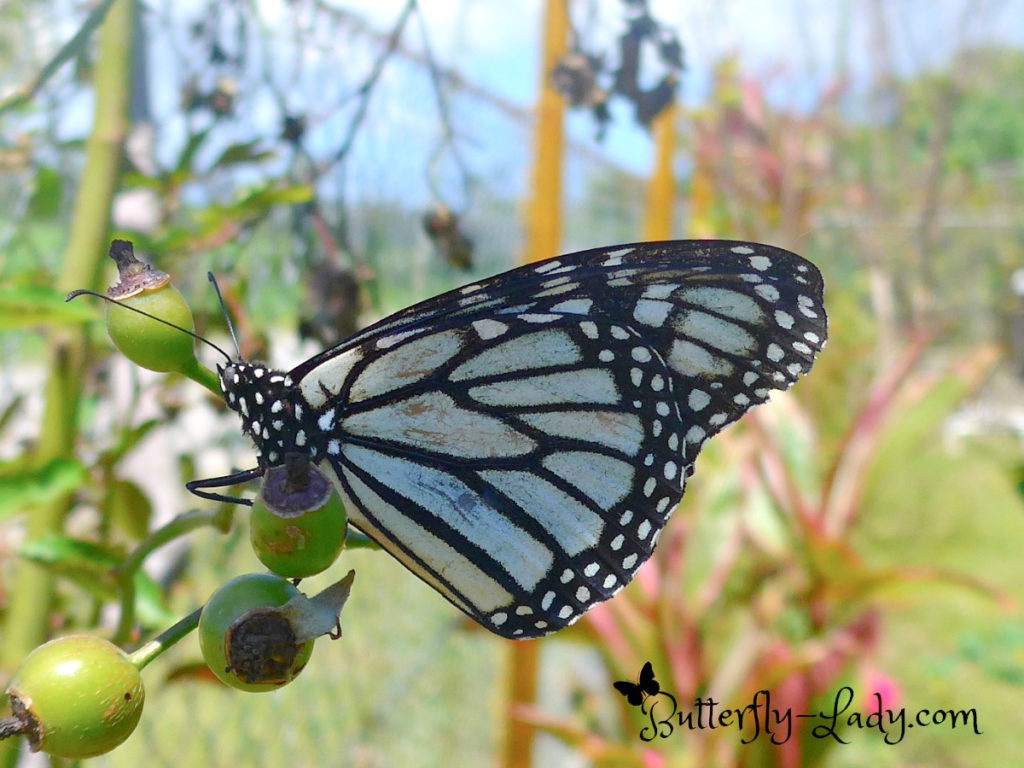 After an overnight stay for observation, I released the white Monarch the next morning. She left me many eggs on the Milkweed in the cage, even laying on the screen, so I thanked her and set her free.
After an overnight stay for observation, I released the white Monarch the next morning. She left me many eggs on the Milkweed in the cage, even laying on the screen, so I thanked her and set her free.